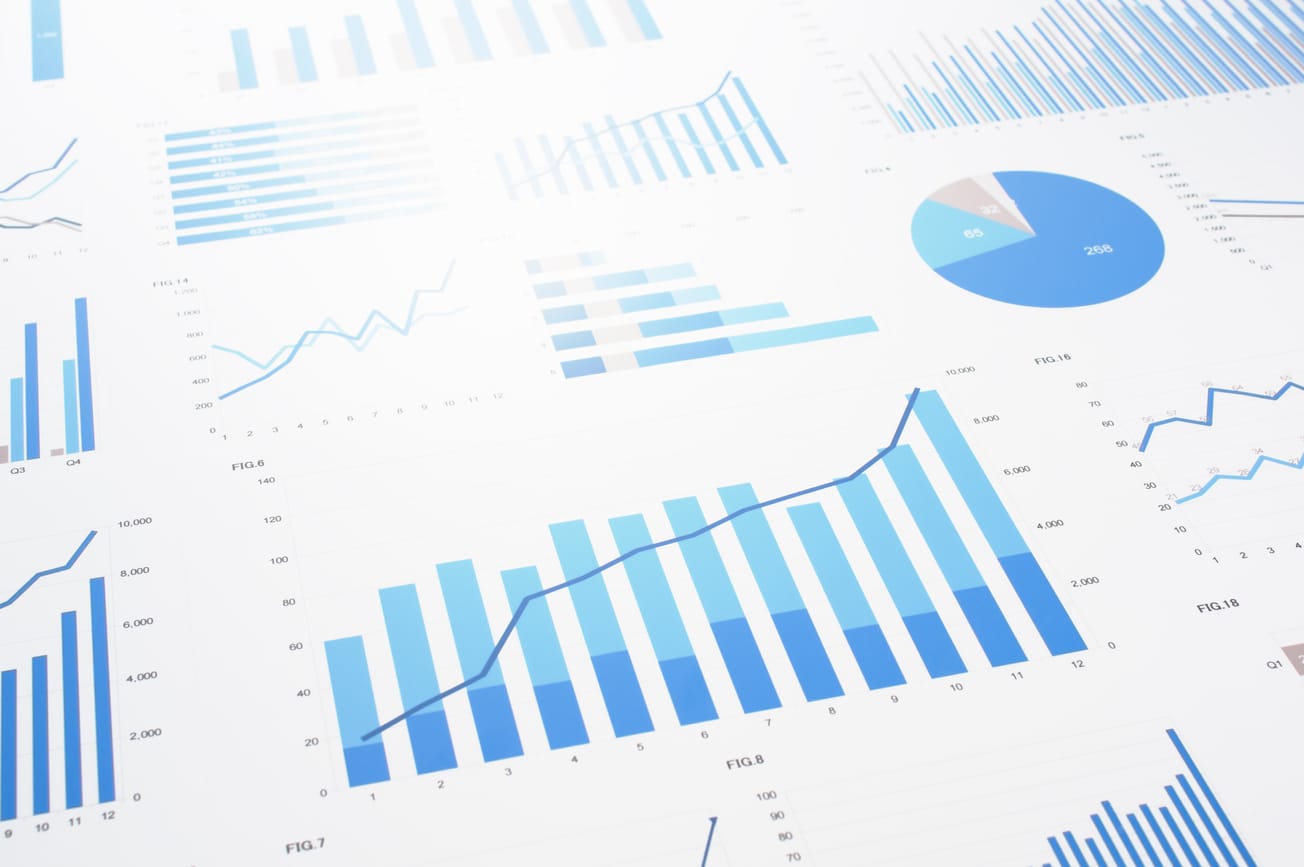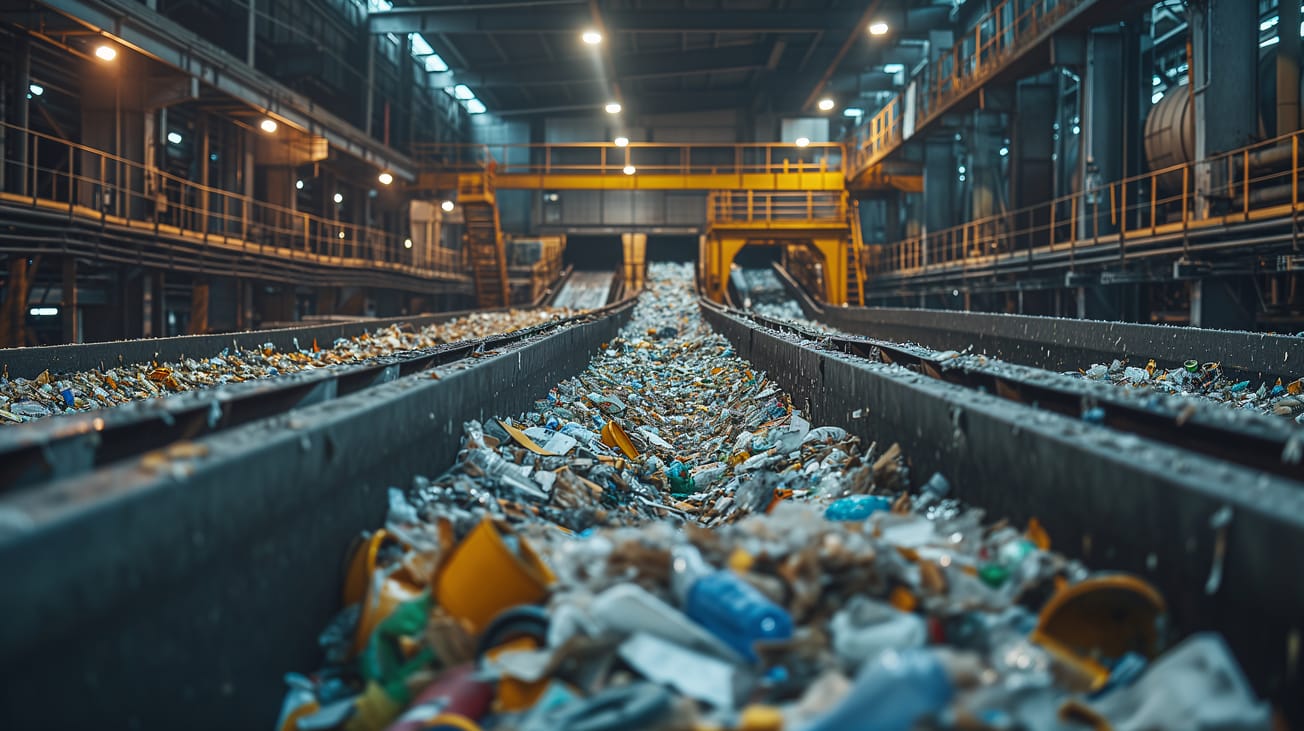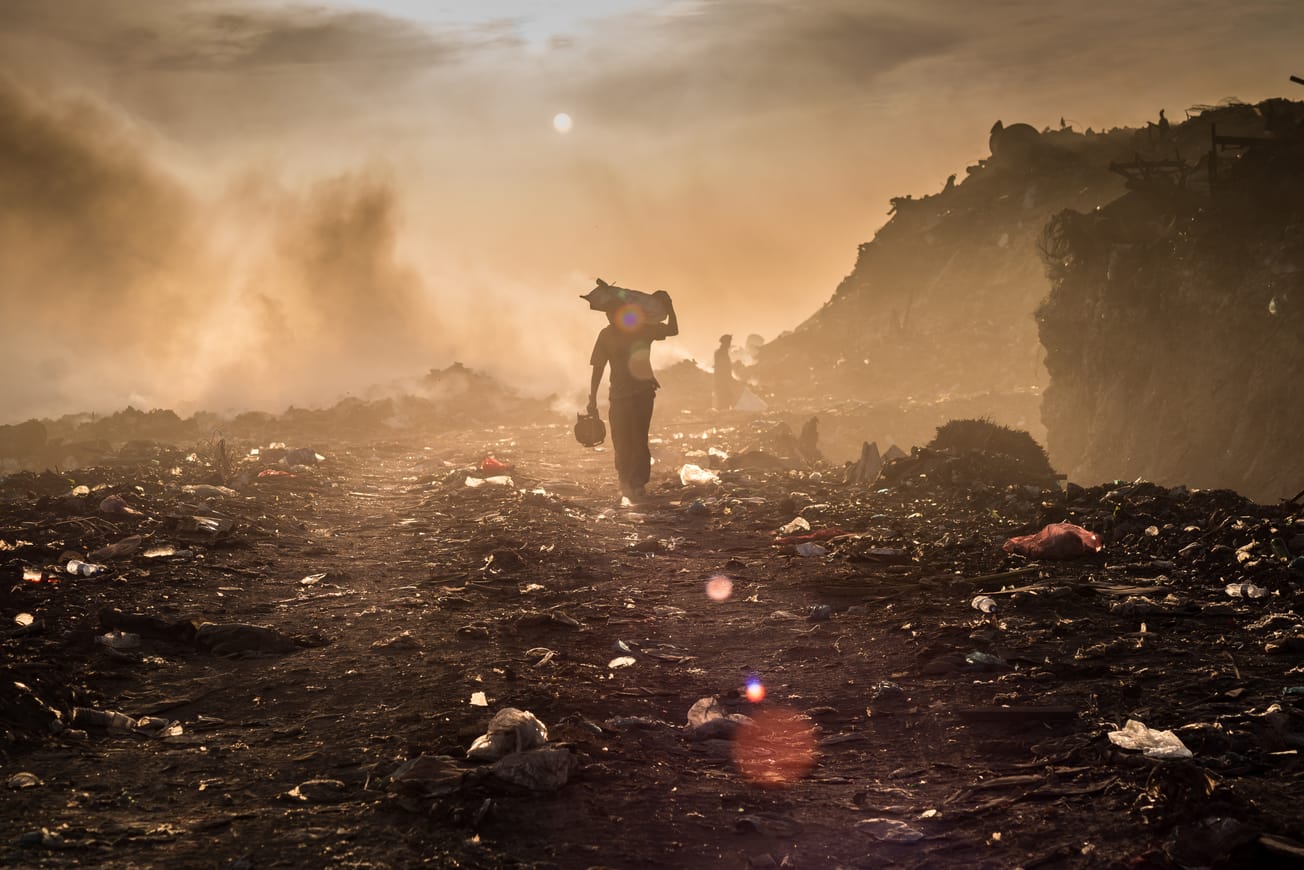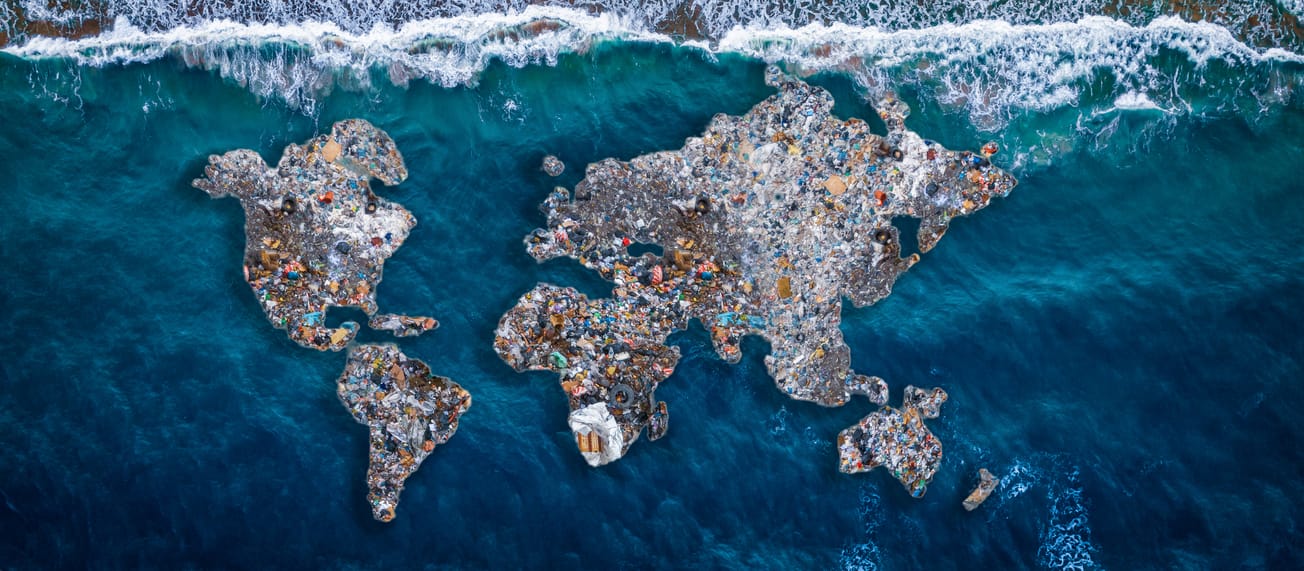A national citizen science network is vital to monitoring trends of plastic pollution across Australian beaches.
Every day an estimated 2,000 garbage trucks full of plastic are dumped into the world's oceans, rivers, and lakes. Plastic entering the environment can alter habitats, harm already threatened species and cause a wide range of impacts to society, the economy and human health by disrupting the livelihoods and wellbeing of millions of people.
Tackling plastic pollution requires international collaboration to limit the continued release of plastics into the ocean while dealing with those already within the environment. In March 2022, the UN Environmental Assembly made history when they agreed to develop a legally binding agreement to end plastic pollution. International negotiations are currently underway to shape and define the treaty, with the revised zero draft released in December 2023. The UN Sustainable Development Goals (SDGs), specifically Goal 14, also recognise the need to reduce plastics within the marine environment.
Sustainable Development Goals (SDGs)
The 2030 Agenda for Sustainable Development (est. 2016) outlines 17 SDGs to be achieved by 2030 (E/CN.3/2016/2/Rev.1) along with a framework of 230 indicators and targets which are used to measure progress towards the SDGs.
Among the SDGs, SDG14 focuses on the conservation and sustainable use of oceans, seas and marine resources. To achieve this goal, specific targets are outlined, such as 14.1, to “prevent and significantly reduce marine pollution of all kinds by 2025.”
To measure progress towards SDG targets, specific indicators are chosen. The indicator for SDG 14.1.1b is specifically related to the density of plastic debris across all marine environments including plastics on the seafloor, in the water column, ingested by biota and washed onto beaches.
While SDG 14.1 specifically refers to ‘marine pollution of all kinds’, plastic debris can also come under SDGs 6.3, 12.4 and 12.5, which refer to improving water quality by reducing pollution, managing chemicals throughout the lifecycle, and reducing waste, respectively.
Reporting on these indicators requires an extensive database of information across the full life cycle of plastics and spanning many years.
Australia and the use-case for citizen science
Australians have a deep connection with the ocean. The potential impact of marine plastic has led to its recognition as a ‘Key Threatening Process’. More recently, Australia has developed a "National Plastics Plan” to move towards a circular economy and reduce plastic pollution, with State Governments following suit, announcing their own plans with complementary goals to accelerate progress.
Despite the usefulness of SDG indicator 14.1.1b to report the density of plastic debris in marine environments, few countries have reported on this SDG Indicator. This may be because to so requires repeated sampling (e.g., annually) at a large scale, a task that many research and government programmes do not have the resources to do.
Citizen science initiatives present an opportunity to engage the local community while contributing much needed data. Australia is fortunate to have the Australian Marine Debris Initiative (AMDI) Database which is the largest citizen science database of marine debris in the Southern Hemisphere. The initiative, managed by the Tangaroa Blue Foundation, has the potential to support SDG reporting as it contains data collected:
- Nationally,
- Regularly on the same beach (sometimes even monthly), and
- Using specific methods and categories that allow us to compare across Australia.
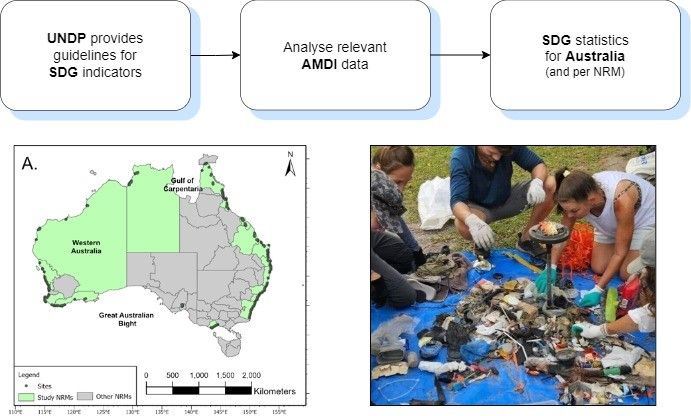
This study
Since 2004, over 1,400 organisations and individuals have submitted records of their clean-ups into the AMDI Database. As of May 2023, it contains records of over 31,000 clean-up and monitoring activities, documenting more than 22 million debris items.
Using AMDI data from 2014 to 2019, the UNSW Centre for Sustainable Development Reform collaborated with the Tangaroa Blue Foundation to produce the SDG Indicator for plastic pollution across Australia.
The team calculated the number of plastic items per square meter on sandy beaches facing the open ocean (i.e. not facing an estuary or river) across Australia and Natural Resource Management (NRM) regions (these are regions of Australia distinguished by land-use and governed by NRM regional bodies and plans).
The study revealed:
- The average national debris density was between 0.155 to 0.279 - 0.279 items per square meter between 2014-2019.
- Significant differences were observed across regions. This could be related to larger populations (e.g., Greater Sydney) or plastic arriving from the ocean (e.g., Cape York).
- Plastic is more dense in 'major cities' and less dense in 'Inner Regional areas' (e.g., Northern Territory, Northern Agricultural Region, and Rangeland Region).
The density of plastic on Australian beaches was shown to vary fluctuate over the four years studied, highlighting the dynamic nature of plastic pollution and the need for long-term monitoring.
Australia has announced ambitious policies and plans to combat plastic pollution. However, the majority of interventions occurred after the study period, such as the implementation of single-use plastic bans post-2019, with further bans on various plastic items planned over the next two years until 2025. The estimates from the study allow us to identify plastic "hotspots" and where to conduct interventions and further research. The AMDI data is ongoing, providing the opportunity for future studies to investigate the effectiveness of recent interventions.
Next steps
The study provides a first attempt to produce the SDG Indicator on plastics for Australia and to track how it has changed over time. Using data from citizen science, the indicator could continue to be produced, allowing Australia to track plastics and their potential impacts to the environment. This could be done by:
- Raising the awareness of SDG Indicators for management and decision making,
- Strengthening engagement between the citizen science community and government institutions responsible for SDGs (e.g., Australian Bureau of Statistics), and
- Improving dialogue with stakeholders at the National and State level.
Such collaborations between a National Statistics Office and citizen science initiatives have already proven successful in Ghana and New Zealand. In fact, through a dedicated initiative (CS4SDGs), Ghana became the first country to report on SDG Indicator 14.1.1b using citizen science data (Olen, 2022). If Australia harnesses the power of available citizen science, we can track progress towards targets for reducing plastic pollution and, in turn, safeguard our marine environments.
The use of citizen science models can be expanded beyond just those SDGs related to plastics. If NGOs and others collect and store data using a standardised method, this data could be used to report on other indicators and progress towards SDGs. For this to work, governments must also be open to such approaches.
Authors: Bella Charlesworth, Jordan Gacutan (CSDR), Lincoln Hood (Tangaroa Blue Foundation).




